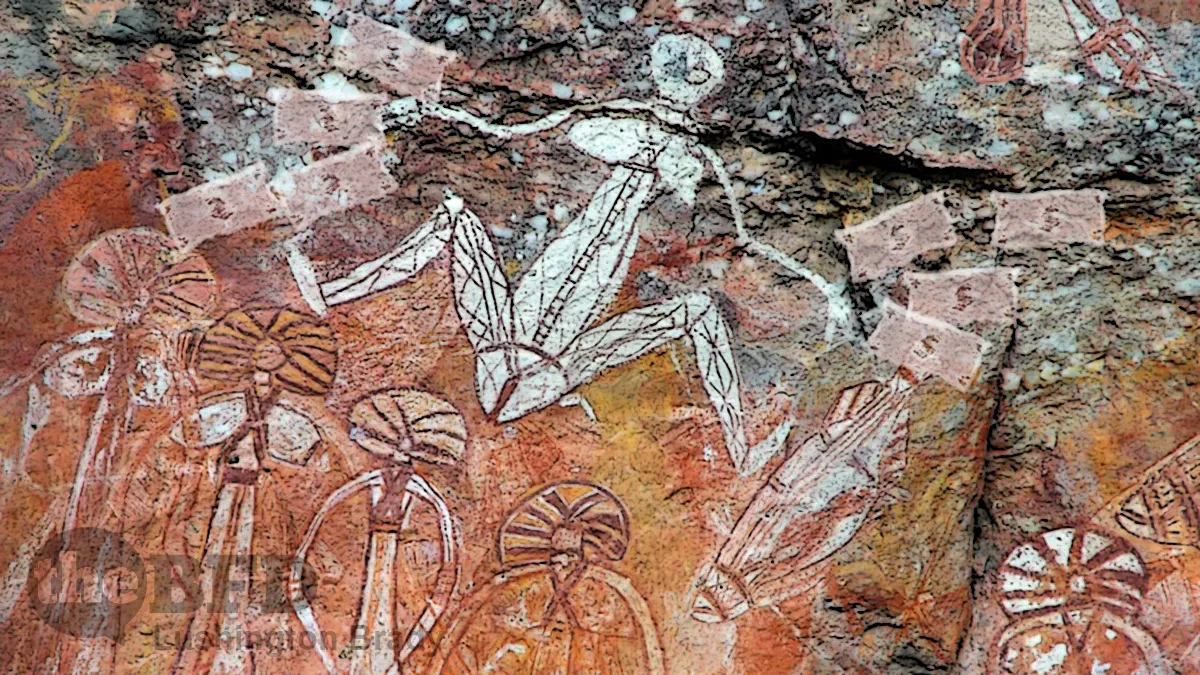With hindsight, the Hindmarsh Bridge affair should have been seen at the time for what it was: a test case of Enlightenment rationalism against primitive tribal superstition. Alas, even then, Australia’s media-political chattering classes were all gaga for a bit of oogabooga. So the primitive tribal superstitions won.
For BFD and younger readers unfamiliar with the case, in the 1990s a bridge was proposed to join South Australia’s Hindmarsh island to the mainland. The development attracted the usual screeching cliques of NIMBYs and nosey-nannas. But it really ramped up when some enterprising journalists sobered up some local Aboriginal women long enough to start babbling how the bridge had to be stopped, because of “secret women’s business”.
What “secret women’s business”, you may ask? Well, you can’t know: it’s a secret. But apparently it’s something to do with the alleged fact that the island supposedly resembles “female reproductive anatomy” when seen from the air. Which raises questions not only about how, exactly, Aborigines were flying thousands of years ago, but what they were on, to see a big ol’ vajayjay in an unremarkable spit of land. (Personally, I reckon it looks like a turtle humping a rock, but what would I know?).
Building a bridge, so the argument goes, would be disastrous for the local Aborigines’ fertility. Kind of a giant concrete IUD, as it were. Although why, exactly the existing cable ferry and barrages weren’t interfering with the pristine, spermy waters was never satisfactorily explained. Secret women’s business, you see.
Well, modern Australia being what it is, claims of magic space vaginas weren’t simply laughed off the front page. In the end, the Howard government had to pass legislation to allow the bridge to go ahead. The Ngarrindjeri seem to be doing just fine, after all.
Thirty years on, and we’re still allowing Stone Age just-so stories to stymie developments.
On the Tiwi Islands, people traditionally bury their dead under carved and painted poles called Pukumani […]
Now these Tiwi elders fear the gas company Santos is about to put a pipeline through sacred sites, including several Pukumani.
How do they know this? The short answer is, they don’t. They just reckon.
Because the pipeline in question is going under the sea. Not to be outdone by the flying Aborigines of Hindmarsh Island, the Tiwi are apparently using their magic Aboriginal submarines.
It is believed these sites are not on land, but submerged in waters to the west of the Tiwi Islands.
“It is not good what is happening,” Ms Francis Tipiloura told ABC News.
“It hurts us and our beliefs.”
And, as we all know, these days hurty feelings trump all other concerns. Especially indigenous hurty feelings.
No matter the lack of evidence.
Santos, however, said there was “no specific Indigenous underwater cultural heritage places” along the pipeline’s route, and that it is going ahead with this infrastructure for its $5.7 billion Barossa gas project in the Timor Sea.
Now, who do you think a modern, woke Australian court is going to believe? A scientific assessment, or some Stone Age “we-just-reckons”?
The multi-billion-dollar plan to drill for gas 300km north-west of Darwin in the Northern Territory was first flagged last decade.
The offshore oil and gas regulator NOPSEMA gave Santos environmental approval for its drilling sites above the Tiwi Islands last year.
This drilling approval was then challenged by Dennis Murphy Tipakalippa with support from the EDO.
The Munupi clan leader won this David vs Goliath case, with the full Federal Court finding both Santos and NOPSEMA hadn’t consulted with traditional owners.
Translation: they didn’t hand over a wad of cash to placate the Rainbow Serpent, first.
At least 21 First Nations groups including the Tiwi people have oral histories indicating they witnessed sea level rise at the end of the Ice Age, research shows.
ABC Australia
Having read some of these “studies”, well… let’s just say they make the fanciful fairy stories of Magic Maori discovering Antarctica read like Newton’s Principia Mathematica.









